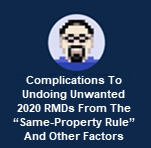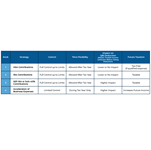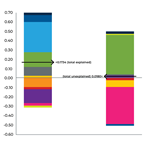Enjoy the current installment of "Weekend Reading For Financial Planners" – this week's edition kicks off with the big industry news that Schwab is launching a free MoneyGuide-like financial planning software solution for all of their (retail) clients to use, emphasizing both Schwab's own increasing focus on financial planning as part of its retail advice to consumers, and undermining financial advisors who view their own value proposition as 'just' delivering the comprehensive financial planning software output as a financial plan that more and more consumers will be able to get for free from Schwab directly.
Also in the news this week are several interesting industry studies, including one that finds despite the hype around model marketplaces from asset managers looking for adoption and technology companies offering them in the hopes of getting a piece of the pie, actual advisor adoption is barely around 10% as advisors fear making a third-party money manager too much of their own value proposition with clients, and a look at how the tech snafus of many advisor platforms are leading a majority of advisors under age 40 to look for new platforms that are more tech savvy.
From there, we have several interesting articles about advisory fee models, including the latest research from Bob Veres showing that, while the AUM model remains dominant with more than 70% of firms being "AUM-dominant", only a minority of those are AUM-only and instead blended fee models of AUM and hourly or subscription/retainer fees are becoming increasingly common, a look at one advisor who decided to stop offering hourly financial planning options for clients (out of frustration that they didn't always follow through on the advice properly on their own), and a discussion of what happened when one advisor decided to raise his minimum fee to $10,000 per client (and the conversations he had with a subset of clients who didn't want to stick around for the fee increase).
We also have a few articles around client communication, including a look at how the pandemic may have changed the style of communication but the demand for client communication is only increasing, how adopting more digital tools (if only 'forced' by the pandemic) is ending out reducing paperwork errors and increasing client trust, and an exploration of what it means to go 'full curbside' service in an advisory firm the way more and more retail businesses have had to transition
We wrap up with three interesting articles, all around the theme of productivity and the digital world: the first looks at how team meetings may actually be more productive virtually than in-person by adopting digital collaboration tools (e.g., Google Docs); the second explores how it's often 'easy' to quickly delegate by email but leads to such poor delegation habits that a "no delegating by email" rule may actually improve the business; and the last explores how technology has made it easier and easier to maintain an ever-longer to-do list but just results in more frustration when we can't get to everything on the digital to-do list, and why it's better to keep a shorter and simpler to-do list by paper (if only to force yourself not to try to task with more than can really be done and focus instead on the few things that really matter most!).
Enjoy the 'light' reading!










